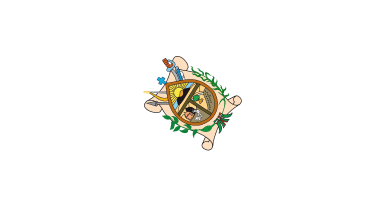
by Daniel Rentería, 11 July 2025, using coat of arms at penamillerqro.gob.mx
image: [1] from vozimparcial.com.mx

Last modified: 2025-07-18 by daniel rentería
Keywords: penamiller | queretaro | bandera municipal y escudo municipal (queretaro) | escudo del municipio (queretaro) | bandera del municipio (queretaro) | héraldica municipal de queretaro |
Links: FOTW homepage |
search |
disclaimer and copyright |
write us |
mirrors

by Daniel Rentería, 11 July 2025, using coat of arms at penamillerqro.gob.mx
image: [1] from vozimparcial.com.mx
See also:
The council told me their municipal flag was adopted on 14 December 1998 but there is no way of really proving this; it does appear to use a more modern version, however. The flag of Peñamiller is white with its coat of arms placed diagonally so it appears upright on indoor flags.
Daniel Rentería, 11 July 2025
.gif)
from penamillerqro.gob.mx
The council informed me their coat of arms was adopted in 1993, being designed by Asunción Transito Rivas Mata and adopted through a call for submissions held by the Municipal Council under Ruperto Alvarado Gudiño (1991-1994). The coat of arms is a scroll bordered on its sides by a walnut branch (left) and willow branch (right) as a great source of income, especially with regards to the first; both branches are held together by a ribbon in the National Colors. In the center is the shape of a nut as the most cultivated product in the municipality, topped by a cross for faith/the colonization, with Indigenous and Spanish weapons representing the colonial era depicted to its sides, from left to right: spear, bow, sword, musket.
The shape of a nut is divided into three sections, having at the top: a scene with the sun and its rays (in older versions, 18 rays represents the foundation year of 1748) over the water and Sierra Gorda Mountains. The lower-left section depicts a Spaniard with a sword and shield conquering a Chichimeca Indian on the floor, representative of the colonial era. Above him is a representation of a church, topped by a cross as a principal colonial monument it still has. The lower-right section depicts a path over the hills leading to a cemetery with many tombs, representing the 37 families that populated the area. Above this to the left, a tree represents the splitting of lands.
Daniel Rentería, 11 July 2025
Anything below this line was not added by the editor of this page.